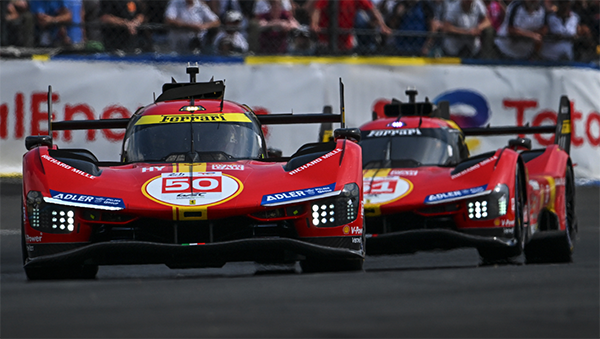This past weekend saw the 100th anniversary of the 24 Hours of Le Mans and an exciting showdown between the Hypercars of Toyota and Ferrari. In the end, an incident for the leading Toyota (2 hours from the finish) sealed their fate, resulting in Ferrari’s first overall win at Le Mans since 1965, when Masten Gregory and Jochen Rindt drove their NART-entered 275 LM to victory. Ferrari’s victory this year is impressive, both for reasons readily apparent and some less so.
First off, any overall victory at Le Mans is impressive. But for Ferrari, even more so considering this year’s win marked the Scuderia’s 10th overall victory (the first in 1949, then 1954, 1958 and a subsequent string of dominance from 1960-1965). After its 1960-1964 win streak, the Commendatore, Enzo Ferrari, famously chose to focus his factory racing efforts and resources on Formula One from that point forward, arguably leading to Ferrari’s long 50-year absence from the top rung of the podium at Le Sarthe. But there is an interesting kernel of history buried in these observations that I’m surprised I’ve never heard mentioned before. In the 100 years of Le Mans history, Ferrari is the only manufacturer to have won both Le Mans and the Formula One manufacturers championship in the same year. And even more impressively, they did this “double” twice.
No Subscription? You’re missing out
Get immediate ad-free access to all our premium content.
Get Started



